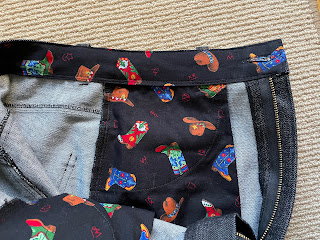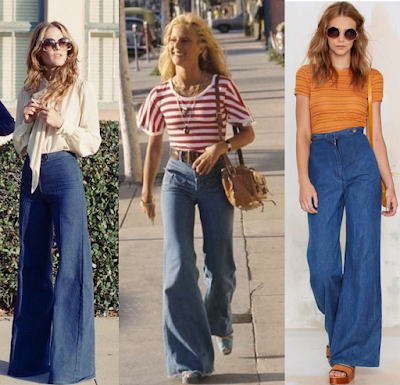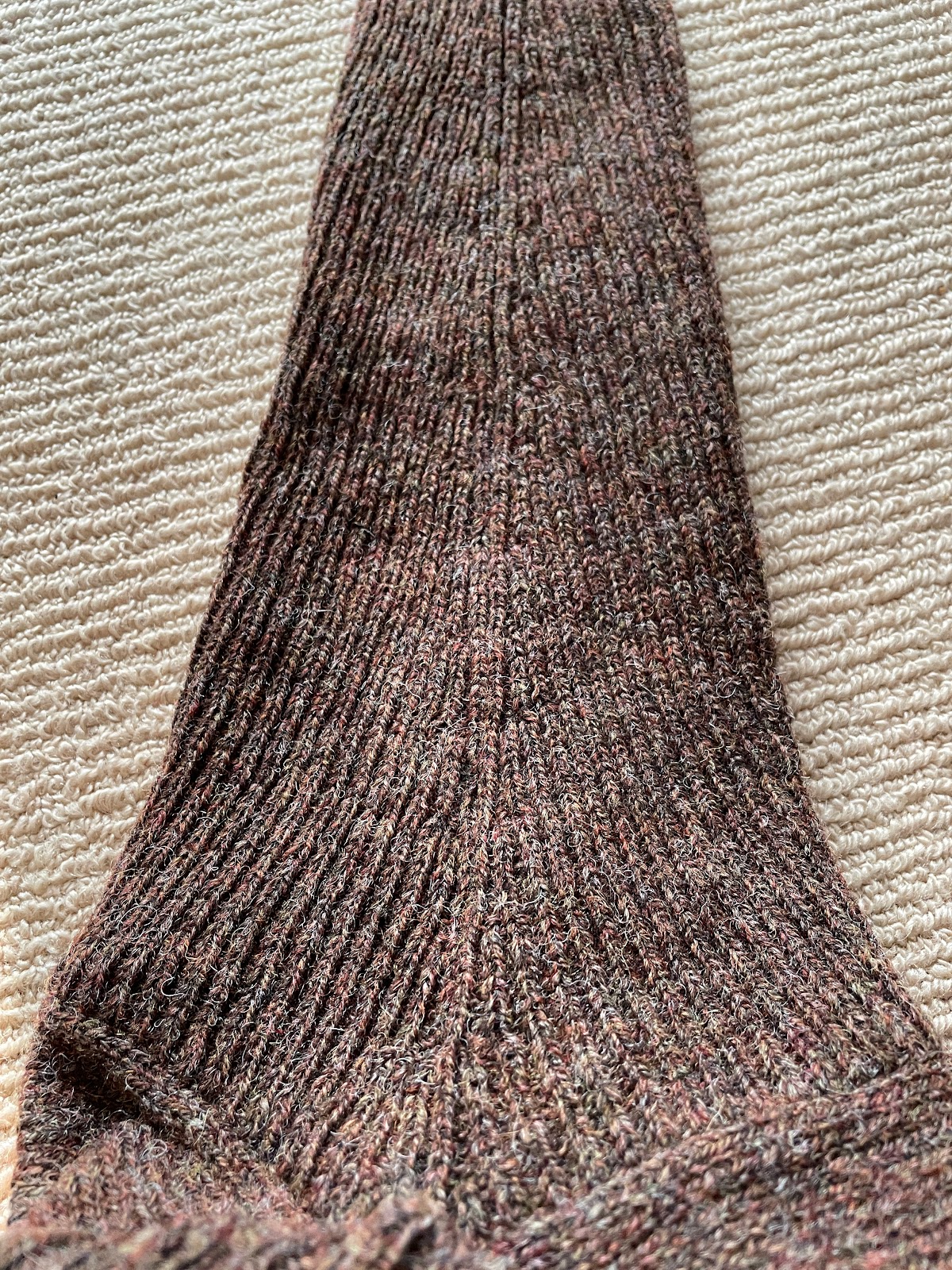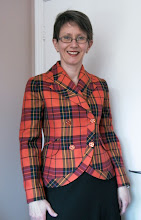Monday, October 23, 2023
Mission accomplished - Dawn jeans
Wednesday, October 18, 2023
1970s? Your jeans are calling
I lusted after jeans with long, wide legs in the 1970s. I have a specific memory of an ad that featured an impossibly leggy young woman wearing such a pair. If she had feet, it wasn't apparent; the hem of her jeans skimmed the floor around her (no doubt) very high platform shoes.
I thought this photo might pop up on the internet but sadly it did not. Instead, I found a bunch of snaps that will show you the general vibe, capturing my wish for my current sewing project.
- The waistband sits at the actual waist.
- The hips are snug but not skin tight.
- The legs are wide and flared from the hip.
Tuesday, October 17, 2023
Finishing so I can start something else
I don't love the fabric, which is a strangely flimsy cotton with this extremely large repeat.
I obviously wouldn't wear it tucked in but I think the shorts are hilarious (random pattern "matching") and they would be covered up if I had laid them out differently.Friday, October 6, 2023
Lumb Bank cardigan
 I totally recalculated the neck band so that it had a seam at CB rather than (as designed) two seams above the V crossing of the front neck. The structure of the band is many stitches cast on in full needle rib, and then every 2nd stitch transferred on the ribber bed. It looks like 1x1 ribbing on the ribber side, which is the public side once attached, and like FNR on the main bed side. It's OK but not my favourite ever neck band technique. My thought was that it needed to be stretched much more than the pattern indicated - i.e. that the pattern instructions would produce a neck band that is overall too long for the opening. I am glad I shortened it and think I could have been even more aggressive as it is not sitting quite flat at the side neck.
I totally recalculated the neck band so that it had a seam at CB rather than (as designed) two seams above the V crossing of the front neck. The structure of the band is many stitches cast on in full needle rib, and then every 2nd stitch transferred on the ribber bed. It looks like 1x1 ribbing on the ribber side, which is the public side once attached, and like FNR on the main bed side. It's OK but not my favourite ever neck band technique. My thought was that it needed to be stretched much more than the pattern indicated - i.e. that the pattern instructions would produce a neck band that is overall too long for the opening. I am glad I shortened it and think I could have been even more aggressive as it is not sitting quite flat at the side neck. as the pattern instructed. They are just an extra length of knitting within the side fronts (knitted with the few stitches to either side in hold). I made them in the contrasting colour.
- Intensive knitting experience - no time to ruminate, had to make quick decisions, jump in and just knit. That was surprisingly tiring!
- Properly fully fashioned ribbing (behold at right the underarm seam).
- Put almost the whole thing together using my linker, which hasn't been my favourite piece of kit.
BTW the actual colour of this cardigan is somewhere between how it appears in the inside and outside-in-the-sun photos. The yarn is very heathery. It's Gardiner Yarns SS11 Shetland, 100% wool. I'm not convinced I got all of the spinning oil out of it when I washed it and may attempt to rough it up some more to make it a bit softer.
Sunday, October 1, 2023
First ever MKC retreat
Last month, I went to a machine knitting retreat. It was AMAZING!
Five days in a beautiful house perched halfway down a steep hill (Lumb Bank) outside a quaint, tiny village (Heptonstall) outside a quaint small town (Hebden Bridge) in the Calderdale district of Yorkshire, England, with 15 like-minded knitters, 3 wonderful hosts and 2 expert instructors.
I'm still processing it.
For now, enjoy these photos.
In four very intense days I knitted all of the pieces of my (secret project). It is now finished and this coming week, we retreaters are meeting up by Zoom to unveil our finished items to each other. Afterwards, Nic (Corrigan, founder of the Machine Knit Community) will release the pattern to the world.






















